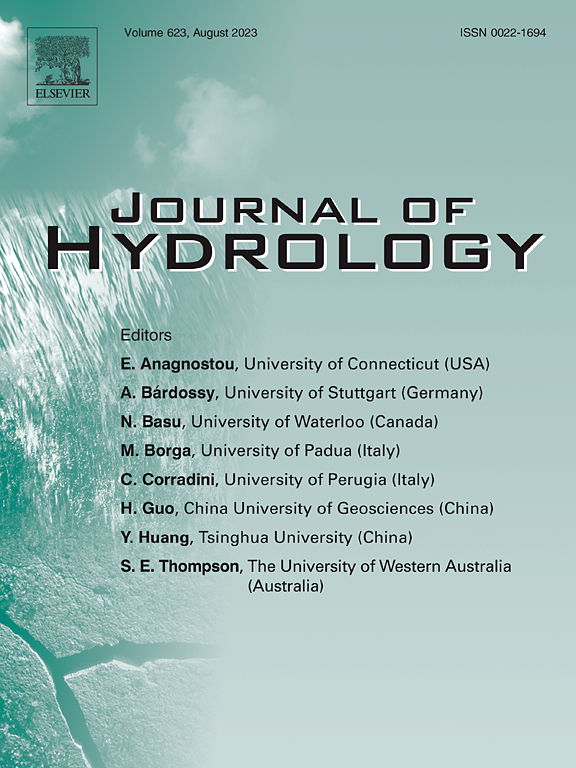Flood vulnerability assessment of urban agglomeration under the background of urban expansion
IF 6.3
1区 地球科学
Q1 ENGINEERING, CIVIL
引用次数: 0
Abstract
Rapid urbanization has significantly intensified the impact of natural disasters, particularly floods, posing a severe threat to urban safety. To enhance urban flood risk management, a quantitative assessment of urban flood vulnerability is essential. This study integrates multi-source data to develop the urban Development Index (DI) and the Normalized Difference Frequency Index (NDFI). By applying area-weighted aggregation, spatial overlay analysis and K-Means clustering, this research explores the spatiotemporal dynamics of urban expansion and its relationship with flood vulnerability in the Chengdu-Chongqing urban agglomeration. The results indicate that between 1995 and 2020, the region experienced significant urban expansion, with urban land increasing by 4,232 km2. Moreover, the newly developed urban areas were found to be more vulnerable to flooding, with 42.26 % affected by floods in 2020. However, the flood vulnerability did not show a simple linear relationship with development level. In more developed cities, such as Chongqing, showed decreasing vulnerability (from level C to A) due to high-elevation terrain and sustained investment in flood mitigation. In contrast, Chengdu experienced increasing vulnerability (from level A to C) due to rapid expansion over flat agricultural land with dense construction. Furthermore, Ziyang showed high flood vulnerability despite slow development, with over 80 % of its newly developed urban areas were affected by floods. The proposed flood vulnerability assessment framework provides a scientific basis for flood risk management in Chengdu-Chongqing urban agglomeration and other similar inland city clusters. Additionally, it serves as a valuable reference for future urban expansion planning and disaster prevention strategies.
城市扩张背景下城市群洪水脆弱性评价
快速城市化大大加剧了自然灾害,特别是洪水的影响,对城市安全构成严重威胁。为了加强城市洪水风险管理,必须对城市洪水脆弱性进行定量评估。本研究整合多源数据,构建城市发展指数(DI)和归一化差频指数(NDFI)。采用面积加权聚类、空间叠加分析和K-Means聚类方法,探讨成渝城市群城市扩张的时空动态特征及其与洪水脆弱性的关系。结果表明:1995 ~ 2020年,区域城市扩张显著,城市用地增加4232 km2;此外,新开发的城市地区更容易受到洪水的影响,42.26%的城市地区在2020年受到洪水的影响。然而,洪水易损性并不与发展水平呈简单的线性关系。在较发达的城市,如重庆,由于高海拔地形和持续的防洪投资,脆弱性从C级下降到A级。相比之下,由于在平坦农业用地和密集建筑上的快速扩张,成都的脆弱性越来越高(从A级上升到C级)。此外,资阳虽然发展缓慢,但却表现出较高的洪水脆弱性,其新开发的城区80%以上受到洪水的影响。本文提出的洪水易损性评价框架为成渝城市群及其他类似内陆城市群的洪水风险管理提供了科学依据。为未来的城市扩张规划和防灾策略提供了有价值的参考。
本文章由计算机程序翻译,如有差异,请以英文原文为准。
求助全文
约1分钟内获得全文
求助全文
来源期刊

Journal of Hydrology
地学-地球科学综合
CiteScore
11.00
自引率
12.50%
发文量
1309
审稿时长
7.5 months
期刊介绍:
The Journal of Hydrology publishes original research papers and comprehensive reviews in all the subfields of the hydrological sciences including water based management and policy issues that impact on economics and society. These comprise, but are not limited to the physical, chemical, biogeochemical, stochastic and systems aspects of surface and groundwater hydrology, hydrometeorology and hydrogeology. Relevant topics incorporating the insights and methodologies of disciplines such as climatology, water resource systems, hydraulics, agrohydrology, geomorphology, soil science, instrumentation and remote sensing, civil and environmental engineering are included. Social science perspectives on hydrological problems such as resource and ecological economics, environmental sociology, psychology and behavioural science, management and policy analysis are also invited. Multi-and interdisciplinary analyses of hydrological problems are within scope. The science published in the Journal of Hydrology is relevant to catchment scales rather than exclusively to a local scale or site.
 求助内容:
求助内容: 应助结果提醒方式:
应助结果提醒方式:


